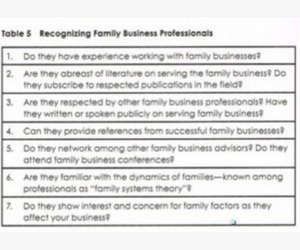Pelvic Pain: A Different Approach To Treatment
Pelvic Pain Is Common And Can Be Debilitating
At any one time, as many as 20 percent of reproductive-age women may be experiencing pelvic pain. This can range from a mild ache that comes and goes to steady and severe pain. Chronic Pelvic Pain (CCP) – pelvic pain that lasts for more than six months – can interfere with every aspect of life. In addition, ninety percent of women with CCP have pain associated with intercourse, which in turn can have a devastating impact on their intimate relationships.
Women With Chronic Pelvic Pain Have A ” Hidden Disability”
Their pain is real, but to the rest of the world, these individuals look normal. The problems associated with CCP include not only the pain, but also constipation and urinary incontinence. These are not visible, and on top of this, the usual tests for such possible causes as ovarian cysts, GI issues, endometriosis, bladder or colon problem may all be negative.
A patient might hear, “No, you don’t have an ovarian cyst, and your colonoscopy is negative.” At the end of a long series of tests, she not only doesn’t have a diagnosis and treatment plan, she may become anxious and depressed. Her real problem is that even though her pain is real and physical, we don’t yet have tests to detect all the causes of CPP. I have found that by the time a patient comes to me, she will typically have already seen 10 other doctors who have told her, “Nothing is wrong.”
Consider Musculoskeletal Problems When Diagnosing Pelvic Pain
Traditionally, we have looked at an organ-based etiology for pelvic pain. We may be looking for a GI or gynecological explanation, but we’re now learning that upwards of 50% of pelvic pain cases come from muscle or nerve pain. Women with pelvic pain may have musculoskeletal problems such as low back or hip issues. The musculoskeletal problems then the muscles and nerves associated with these issues become the drivers of the pain. These can cause a cascade of other problems in addition to pain, such as urinary incontinence or profound constipation.
To Treat Pelvic Pain, In Many Cases We Frist Have To Tackle An Underling Musculoskeletal Problem
Addressing the underlying musculoskeletal or neurological problems can include seeing physical therapists specifically trained in treating the pelvic floor muscles. Think of pelvic floor physical therapy as first-line treatment in these cases, and refer patients to a provider who specializes in this treatment. The American Physical Therapy Association’s Section on Women’s Health offers a physical therapist locator to find qualified specialists. We use myofascial release vaginally to stretch the muscles and then we teach the patients how to relax the muscles. Interestingly, Kegel exercises are often the exact wrong approach since a patient’s problems may be that she can’t relax her muscles, not that the muscles aren’t strong enough.
Pain Medications And Muscle Relaxants Mat Be Appropriate, But Avoid Opioids
Neuromodulator treatments (e.g., gabapentin [Neurontin, Gralise, others], pregabalin [Lyrica], amitriptyline [Elavil], and nortriptyline [Pamelor, others]) as well as muscle relaxants can be effective. We generally do not use opioids for chronic pelvic pain: in our experience, they have not been helpful. In addition, opioids can be constipating, which may lead to more pelvic pain. Many of the patients who enter our chronic pelvic pain program have been on opioids for years, and still report experiencing a pain level of 8 out of 10. I think many of these patients develop a tolerance to opioids as well as opioid-induced hyperalgesia hypersensitivity.
Search Articles
Latest Articles
An Explosive Choice: Landmines and Ukraine
https://cepa.org/article/an-explosive-choice-landmines-and-ukraine/ Publication –cepa.org
Dancing Warriors: How Russia’s Propaganda is Impacting Professional Stages
https://foreignpress.org/journalism-resources/dancing-warriors-how-russias-propaganda-is-impacting-professional-stages Publication –foreignpress.org
Taking the Panic Out of Panic Attacks—With Technology
https://foreignpress.org/journalism-resources/taking-the-panic-out-of-panic-attackswith-technology Publication –foreignpress.org
An Evening Dedicated to Mental Health and Recovery in War-Torn Ukraine
https://foreignpress.org/journalism-resources/an-evening-dedicated-to-mental-health-and-recovery-in-war-torn-ukraine Publication –foreignpress.org
Subscribe to Updates
About Author

Mitzi Perdue is the widow of the poultry magnate, Frank Perdue. She’s the author of How To Make Your Family Business Last and 52 Tips to Combat Human Trafficking. Contact her at www.MitziPerdue.com
All Articles
Choosing Your Family Business Advisors
Choosing Your Family Business AdvisorsKnow when you need to get help. People often ask me the secret of Frank Perdue’s success. He had to do hundreds of things right. He had to be able to see the big picture as well as be detail oriented. But there was something else:...
Substance Abuse and the Family Business
Substance Abuse and the Family Business When it comes to substance abuse, members of a family business are no more immune than the rest of the population. However, as family business advisor Loyd Rawls points out, the consequences can be more dire because serious...
Infertility: Advances In Treatment
Infertility: Advances In TreatmentAge and Infertility are Linked Infertility affects roughly 12% of women. By the time a woman is in her early 40s, her chance of infertility rises to 20%. It’s a particularly difficult problem for the older woman because the quality...
Career Advice for Young People: Shut Up and Listen!
Career Advice for Young People: Shut Up and Listen! Jack Tatem, a former Perdue Vice President, has some serious advice for young people. It’s simple and it can make a big difference in your career. It has to do with listening. The advice is, “Shut up and listen!” He...
Embedding The Family’s Values by Creating an Ethical Will
Embedding The Family’s Values by Creating an Ethical WillOriginal Article written by Mitzi can be found here. Much as I admired Frank Perdue for his success with his family poultry business, I admired him even more for his success as a family man. Since the happiness...
6-Step Solution to Almost Any Problem
6-Step Solution to Almost Any Problem 1. Describe the Problem. Preferably do this in writing. The act of putting the problem into words can clarify your thinking. 2. Write Down the Obstacles. Although I’m a fan of positive thinking, I’m also a fan of research...





